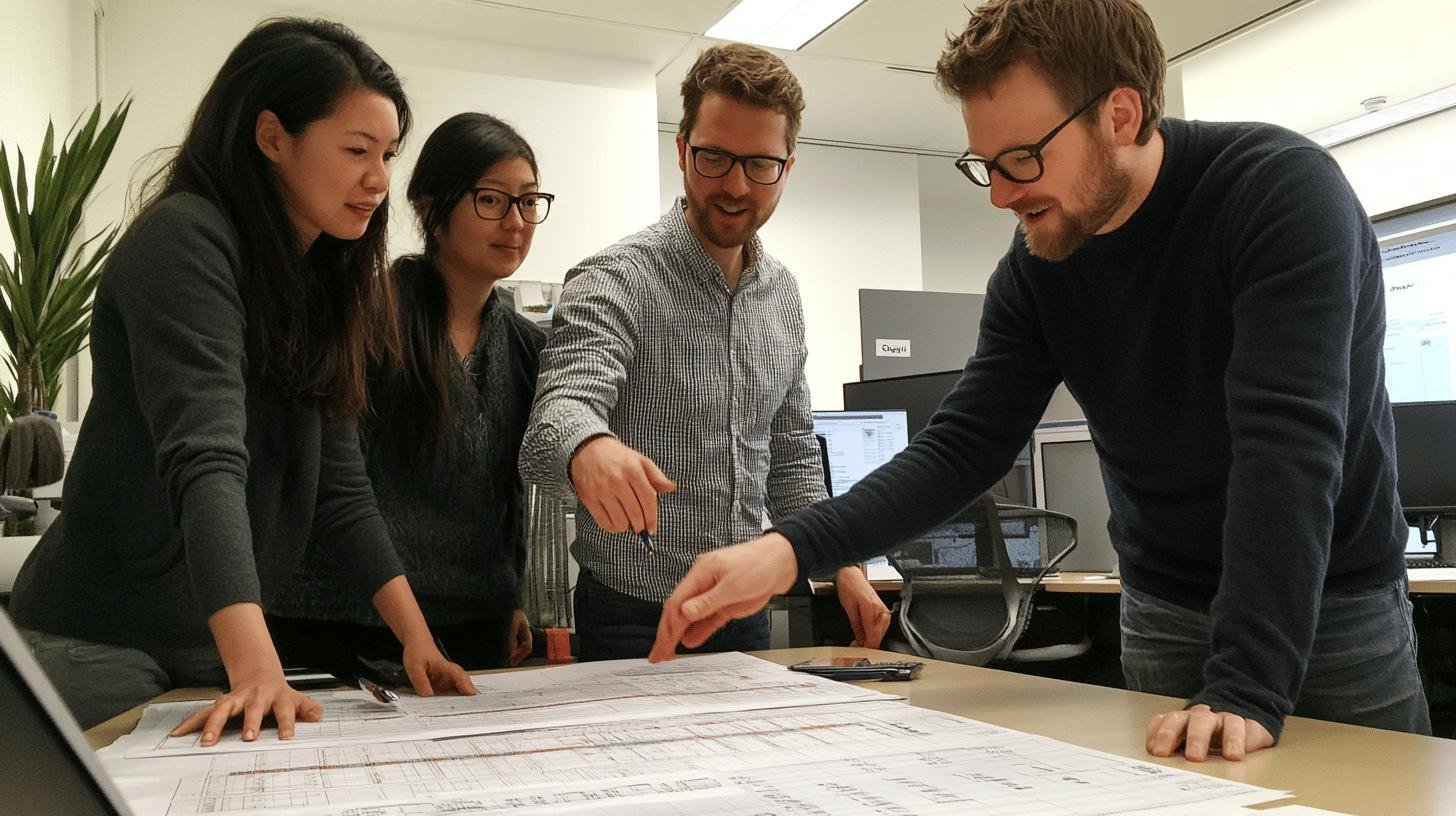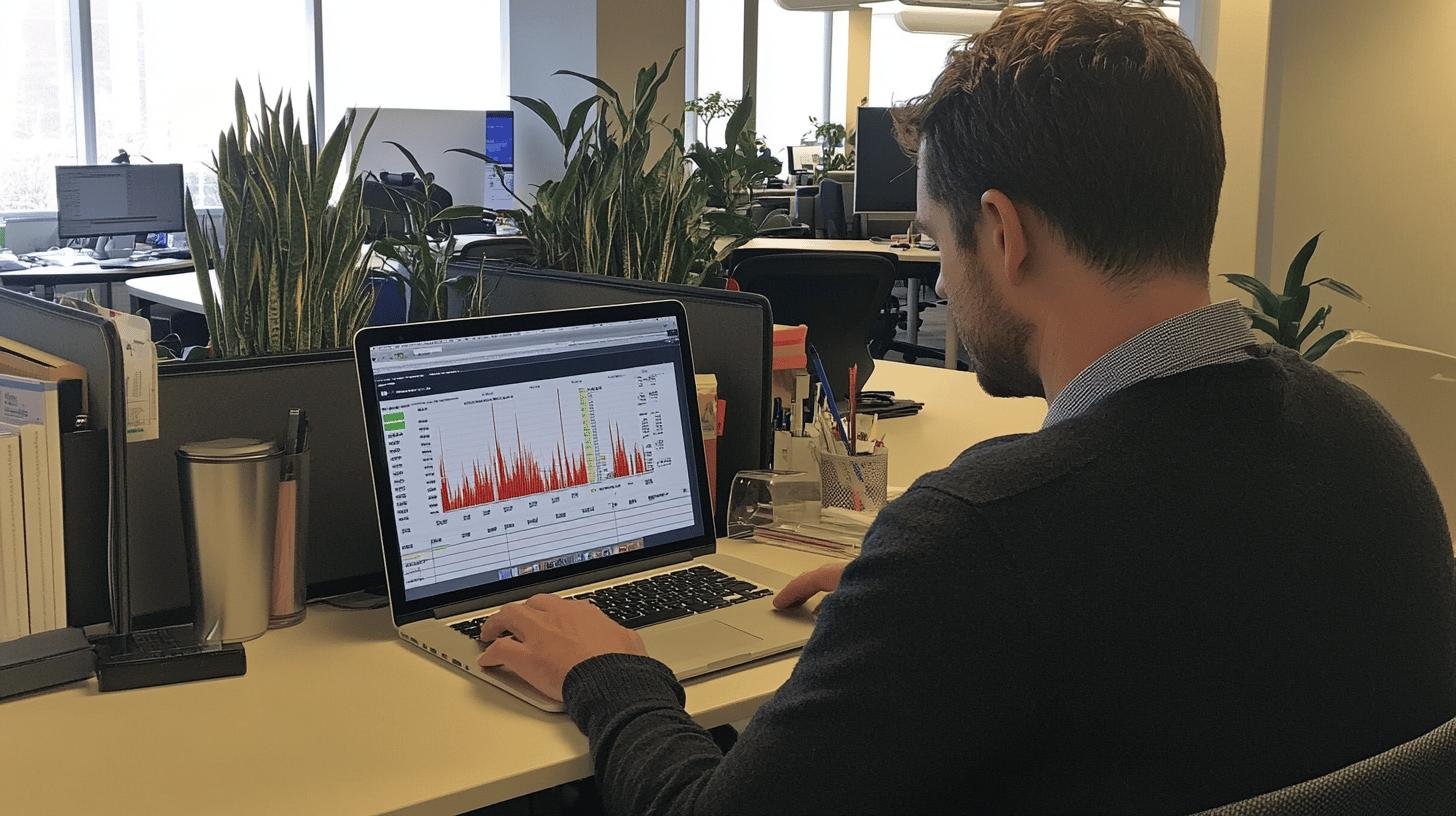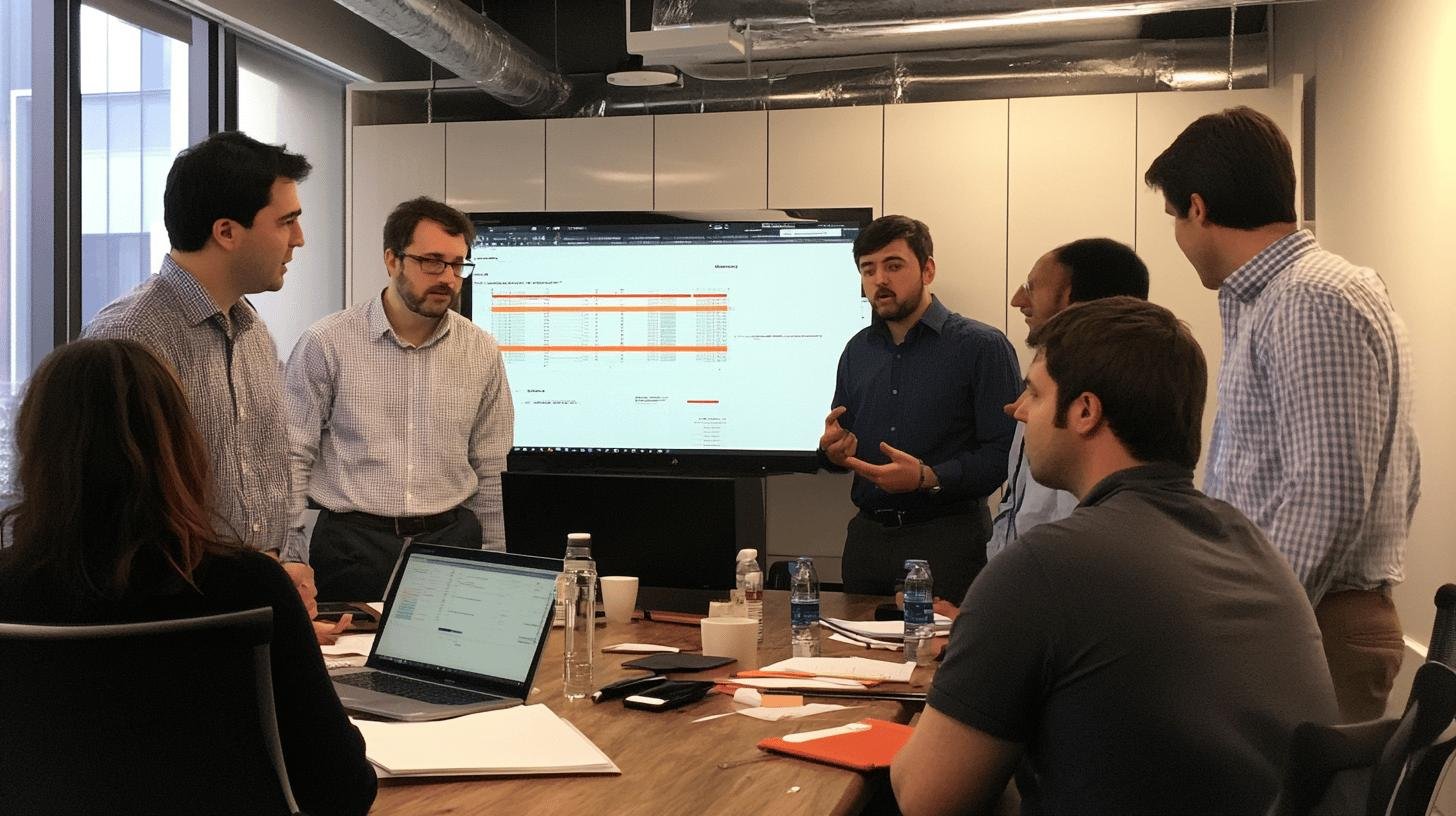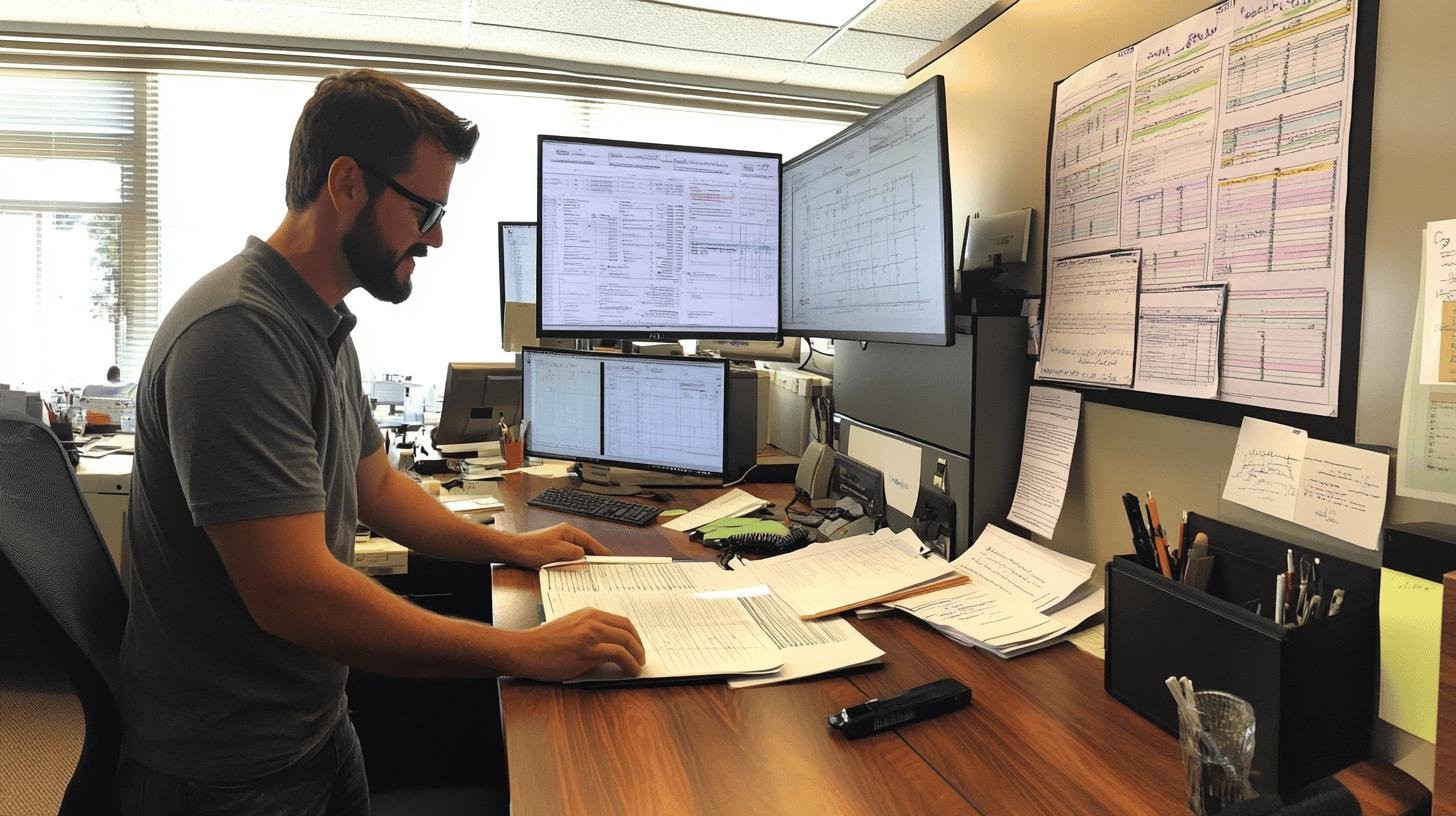TL;DR:
- Project risk management involves identifying, assessing, and responding to risks to ensure project success.
- Key risks: Cost, Schedule, Performance, Operational, Market.
- Principles include Identification, Analysis, Prioritization, Assignment, Response, and Monitoring.
- Risk analysis methods: Qualitative (expert judgment) and Quantitative (numerical data).
- Risk mitigation strategies: Eliminating, Reducing Likelihood, Reducing Impact, Transferring, Contingency Plans, Accepting.
- Continuous monitoring is essential for tracking risk status and updating strategies.
- Tools for management: Risk Register, Risk Matrix Template, Risk Management Plan Template, Gantt Charts, Online Risk Management Software.
- Best practices emphasize a detailed, adaptable risk management plan and ongoing skill development for managers.
Ever wondered why some projects crash and burn while others soar to success? The secret often lies in how well risks are managed. Project risk management is like having a GPS for your project—anticipating bumps, detours, and unseen obstacles along the way. This isn’t just a boring checklist; it’s a proactive strategy.
By identifying, assessing, and responding to potential pitfalls, project managers can steer their teams toward success more predictably and efficiently. Dive into the core principles of project risk management and discover how it can boost your project’s success rate.
Understanding Project Risk Management
Project risk management includes identifying, analyzing, assessing, and responding to risks throughout a project’s life. It ensures that projects meet their goals by anticipating and managing potential risks. Integrating risk management into planning helps teams handle uncertainties, reducing unforeseen issues that could disrupt a project. This proactive method maintains timelines, budgets, and quality, leading to successful project outcomes.
- Cost Risks
- Schedule Risks
- Performance Risks
- Operational Risks
- Market Risks
Being proactive means addressing issues before they become problems. Regularly updating risk assessments as projects progress is vital. This readiness allows teams to adjust strategies and remain flexible, ensuring they’re prepared for unexpected changes. By staying ahead, teams can make informed decisions and keep projects on track.
Key Principles and Frameworks in Project Risk Management

Principles and frameworks form the backbone of effective project risk management. They offer a structured approach to handling uncertainties, helping teams anticipate issues before they escalate. By following these principles, project managers make risk management integral to the project lifecycle. This integration maintains project goals, timelines, and budgets, ensuring successful completion.
- Identification
- Analysis
- Prioritization
- Assignment
- Response
- Monitoring
Two main frameworks guide this process: PMBOK and industry-specific models. The PMBOK framework is widely used for its comprehensive risk management guide. It emphasizes a methodical approach to risk identification and mitigation. Other frameworks may adapt these principles for specific industries, focusing on particular risk types or management styles. Both frameworks highlight the need for a proactive stance to manage risks efficiently.
Effective Risk Identification Strategies
Identifying risks is the first crucial step in project risk management. It’s about spotting potential issues before they disrupt the project. By doing so early, teams can develop strategies to tackle them head-on, ensuring smoother execution. This proactive approach maintains timelines and budgets and boosts stakeholders’ confidence as they see challenges addressed before they grow.
- Brainstorming
- Brain writing
- Horizon scanning (SPECTERS)
- Risk databases
- Risk breakdown structures
- Premortem analysis
These methods are tools to uncover threats and opportunities. Brainstorming and brain writing encourage creativity within teams. Horizon scanning uses the SPECTERS approach to examine broader trends. Risk databases and breakdown structures categorize and analyze risks. Premortem analysis imagines failures to identify potential pitfalls. Together, these methods ensure comprehensive risk identification.
Techniques for Risk Analysis and Assessment

Risk analysis and assessment help understand and manage potential threats impacting a project’s success. Teams evaluate the likelihood and impact of risks to prioritize which require immediate attention. This process supports informed decision-making and mitigates risks effectively, keeping projects on track despite uncertainties.
Qualitative and quantitative methods are key in risk analysis. Qualitative analysis uses expert judgment to classify risks as low, medium, or high. It’s quick and identifies risks needing detailed analysis. Quantitative analysis uses numerical data and models to calculate risks’ potential impacts. Techniques like Monte Carlo simulations and decision tree analysis provide precise risk implications.
| Method | Description |
|---|---|
| Qualitative Analysis | Uses expert judgment to categorize risks based on probability and impact. |
| Quantitative Analysis | Employs numerical data and statistical models for precise risk assessment. |
| Risk Matrix | A visual tool to prioritize risks based on their likelihood and impact. |
A risk matrix visualizes risk severity and prioritization, offering clarity on which risks pose the greatest threat. It helps teams focus their efforts wisely. Plotting risks on a grid measuring likelihood against impact, it simplifies complex data for effective communication and decision-making.
Crafting a Risk Mitigation Plan
A risk mitigation plan strategically minimizes project vulnerabilities. It aims to reduce risks’ likelihood and impact, ensuring projects stay on track. Anticipating issues allows teams to develop specific strategies, safeguarding objectives and boosting confidence. A robust plan prepares projects to handle challenges and maintain momentum.
- Eliminating: Remove the risk entirely by changing plans.
- Reducing Likelihood: Decrease the chances of occurrence.
- Reducing Impact: Minimize effects if it occurs.
- Transferring: Shift the risk to a third party via insurance or outsourcing.
- Contingency Plans: Prepare backup responses.
- Accepting: Acknowledge the risk and proceed.
Integrating these strategies into a risk plan involves assessing and prioritizing risks. Identify key risks, then apply suitable strategies based on impact and likelihood. Involving stakeholders ensures alignment and support. Regular reviews adapt the plan to new risks or scope changes, keeping it effective.
Monitoring and Controlling Project Risks

Monitoring and controlling risks are vital for meeting project objectives. Without continuous monitoring, risks can jeopardize timelines, budgets, and quality. As projects change, new risks may arise, and existing ones can vary. Ongoing control ensures these shifts are identified early for timely interventions. This involves tracking risks, evaluating their impact, and ensuring response strategies are effective.
Updating the risk register regularly is crucial. This involves documenting risk status changes, reassessing priorities, and noting any new risks. A systematic approach keeps the team aware of the current risk landscape for informed decisions. By regularly reassessing, teams adjust strategies to align with goals, adapting to project changes for success.
Tools and Templates for Project Risk Management
Tools and templates transform risk management by organizing data and ensuring consistency. They streamline efforts, making it easier to track risks, document actions, and communicate. Templates ensure thorough coverage of risk management aspects, reducing oversight chances. This organized approach saves time and enhances assessment accuracy and reliability, improving decision-making.
- Risk Register: Tracks identified risks and management actions.
- Risk Matrix Template: Visualizes risk severity and prioritization.
- Risk Management Plan Template: Standardizes strategy documentation.
- Gantt Charts: Schedules and tracks tasks and timelines.
- Online Risk Management Software: Offers real-time updates and collaboration.
These resources boost efficiency and consistency by structuring risk data capture and analysis. Tools like risk registers synchronize everyone, while templates ensure thorough documentation. Online software enables real-time updates and collaboration for quick adaptations. Integrating these into workflows maintains proactive risk management.
Best Practices in Project Risk Management

A comprehensive risk management plan is essential for handling uncertainties challenging a project’s success. It outlines strategies and actions to address risks, preparing teams for eventualities. The plan should be detailed and adaptable, covering all risk aspects, including identification and mitigation. An up-to-date risk register tracks and manages evolving risks. Consistent updates ensure no risk is overlooked, with appropriate actions in place.
Understanding risk events and adopting a proactive management approach is crucial. Recognizing potential threats and opportunities early allows advance preparation. Staying ahead lets teams implement strategies before risks materialize, minimizing impact. This proactive stance maintains project momentum and builds stakeholder confidence in effective risk management.
Developing project management skills enhances risk management capabilities. Strong skills equip managers to handle complex scenarios, improve decisions, and implement strategies. Continual learning ensures managers stay current with techniques and tools. By investing in skills, leaders anticipate challenges, adapt strategies, and maintain control, fostering confidence in managing risks effectively.
Final Words
Tackling project risk management means staying proactive. The article outlined key principles and frameworks, emphasized effective risk identification strategies, and detailed analysis techniques. Crafting a tailored risk mitigation plan and maintaining a vigilant monitoring system are important.
Tools and templates make the process smoother, while following best practices fosters success. Recognizing and addressing risks can prevent setbacks and lead to achieving project goals.
Project risk management ensures projects are not only planned but thrive with minimal disruption. The steps serve as a guide to control and manage project uncertainties effectively.
FAQ
What is meant by project risk management?
Project risk management involves spotting, analyzing, and dealing with risks that could affect project goals. It’s vital to integrate it into the planning stage to predict and control potential issues.
What are the 7 principles of project risk management?
The principles include: 1. Identify risks early, 2. Analyze them, 3. Prioritize, 4. Assign ownership, 5. Develop responses, 6. Monitor consistently, and 7. Learn from past projects.
What are the three types of project risk?
The three types of project risks are cost risks, which affect budget; schedule risks, which impact timelines; and performance risks, which influence project outcomes.
What is the main goal of project risk management?
The main goal of project risk management is to minimize the chances of negative events and maximize opportunities that align with project objectives. It aims to keep projects on track and within scope.
What is a project risk management framework?
A project risk management framework offers a structured approach to identify, assess, and handle risks. It includes steps like risk identification, analysis, prioritization, response planning, and monitoring.
What is Project Risk Management PMBOK?
The PMBOK (Project Management Body of Knowledge) provides a set of guidelines for project management, emphasizing six steps in risk management: identification, analysis, prioritization, response, monitoring, and control.
What are effective strategies for risk identification?
Effective risk identification strategies include brainstorming, brain writing, horizon scanning (using SPECTERS), premortem analysis, maintaining risk databases, and using risk breakdown structures.
How does a risk mitigation plan work?
A risk mitigation plan outlines ways to lessen the impact and likelihood of risks. This involves strategies like elimination, likelihood reduction, impact reduction, risk transfer, contingency planning, and acceptance.
How do tools and templates aid in project risk management?
Tools and templates, such as risk registers and risk management templates, streamline risk documentation and tracking, making management more efficient and consistent throughout the project lifecycle.
What are best practices in project risk management?
Best practices include developing a detailed risk plan, keeping a current risk register, understanding risk events proactively, and enhancing project management skills to better handle potential risks.

